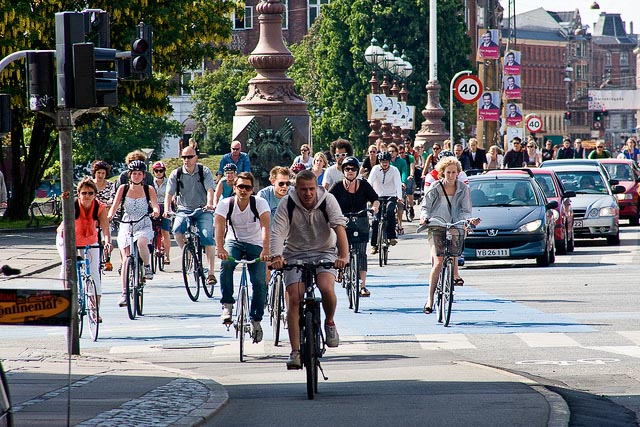You’d be hard pressed to find two Western cities that are more different than Houston and Copenhagen.
The former has a reputation for being a business-focused place where everything is big. Buoyed by an economy that has thrived in recent years as the oil industry boomed, residents drive in big cars on big roads to big houses in one of the country’s biggest cities.
The latter has a reputation for being “happy,” with residents who consider it a safe, clean and pleasant place.
Kinder Institute fellow Michael Emerson and Rice University doctoral student Kevin Smiley describe the two styles as the “market” and “people” approaches to city life. Houston and Copenhagen represent opposite ends of that spectrum. But what accounts for the difference?
It may have something to do with the concept of “trust.”
Today, the Kinder Institute releases its second annual Copenhagen Area Survey, which polls residents of the city about their political and social beliefs. The survey of more than 1,000 Copenhageners was conducted in spring 2015. It complements the Kinder Houston Area Survey, the Kinder Institute’s signature product, now entering its 35th year.
The two surveys ask residents of both cities many of the same questions. But it found that the most fundamental difference between residents of Houston and Copenhagen appears to be their basic view of whether people can be trusted.
About 84 percent of Copenhagen residents believe people can be trusted, compared to 35.6 percent of Houston residents. At the same time, 16 percent of Copenhagen residents say you “can’t be too careful” about others, compared to 64.4 percent of Houstonians.

Those different dynamics are palpable for those who have spent time in both places. “I can feel the difference, living in these two cities,” said Emerson, who has taught classes in Copenhagen. “In Houston, you come from the perspective that somebody’s always trying to get something. You’re always cautious. The opposite assumption is true in Copenhagen.”
When we dive deeper into the survey, there’s a multitude of ways that difference manifests itself.
Copenhageners, for example, are much more interested than Houstonians in living in dense, mixed-use communities.
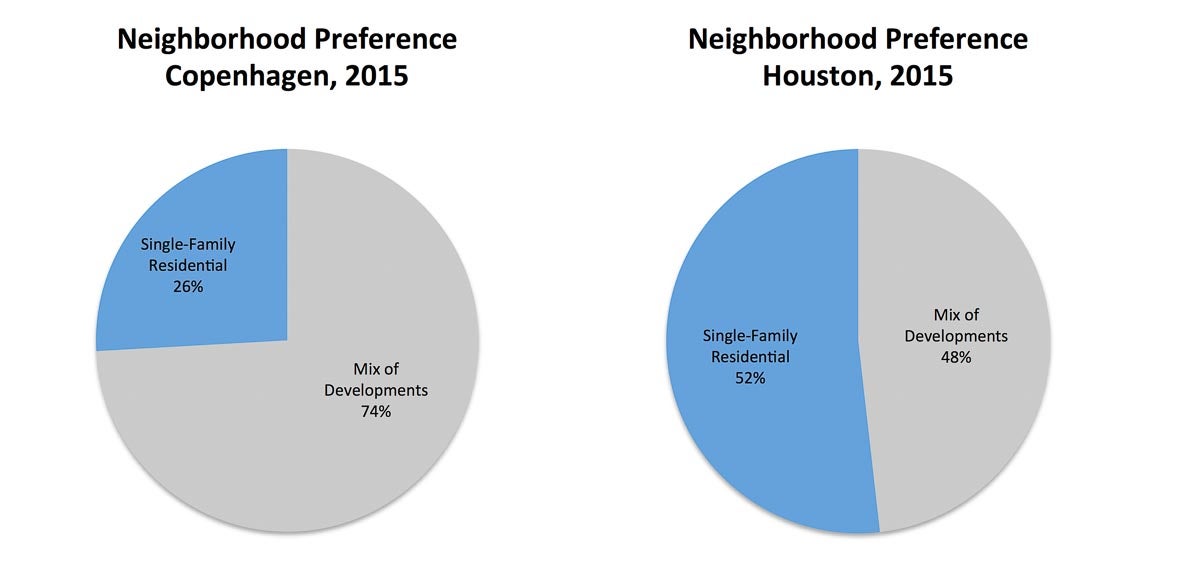
By a ratio of almost 3-to-1, Copenhagen residents favor living in mixed developments rather than in collections of single-family homes. Though Houstonians are increasingly interested in those types of mixed communities, they’re still evenly divided on the issue. Perhaps that's no surprise: if you aren’t as trusting of your neighbors, you may not want to live as close to them.
Or, for example, take the differing views on crime. Copenhageners generally feel safe, with just 5 percent of them indicating they are “very worried” about crime. That finding is especially notable, since the survey was conducted just weeks after a high-profile Valentine’s Day shooting in Copenhagen that garnered international headlines.
Still, more than 80 percent of the city's residents said they are “not very worried” or “not worried at all” about crime.
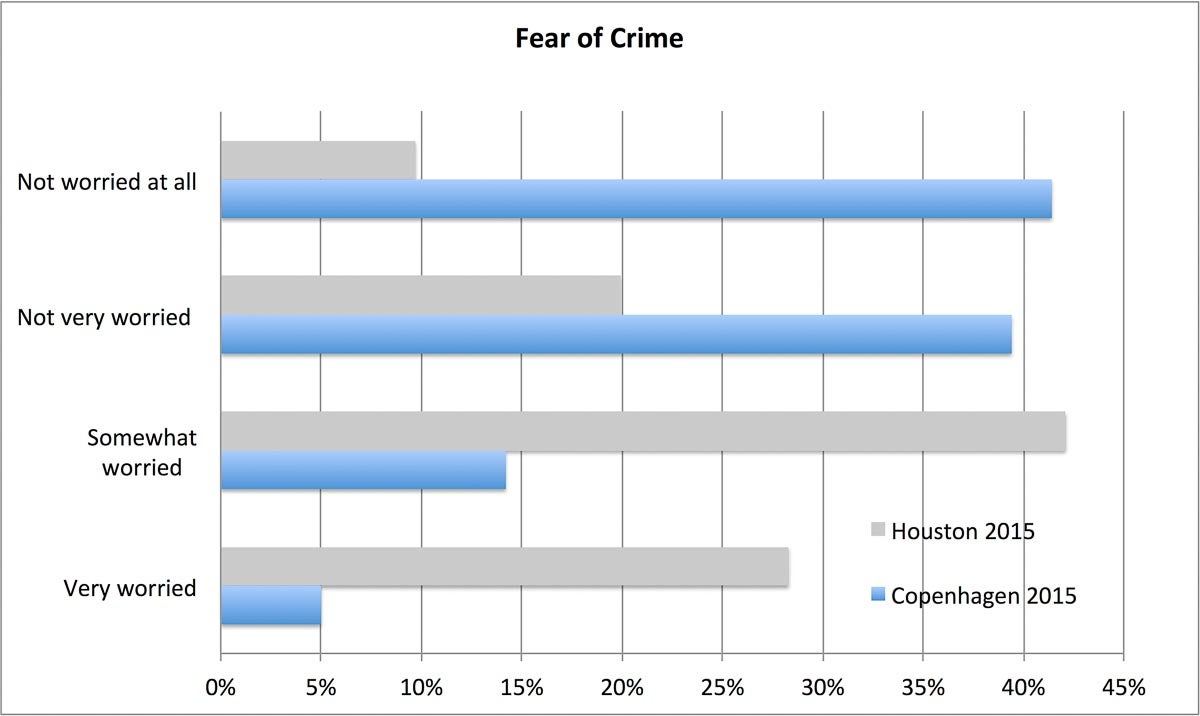
In Houston, fear of crime is much higher. Seventy percent of Houston residents are “very” or “somewhat” worried about crime. It’s not clear whether Copenhageners are trusting because they feel safe from crime, or vice versa, but it seems clear those two dynamics are related.
We may even see the impact of “trust” in how Copenhageners approach their commutes, relative to Houstonians. Copenhagen residents were more than 10 times as likely as Houstonians to say they use public transportation to get to work (40.3 percent vs. 3.7 percent), and more than 100 times as likely to commute by bicycle ( 48.9 percent vs. 0.3 percent).
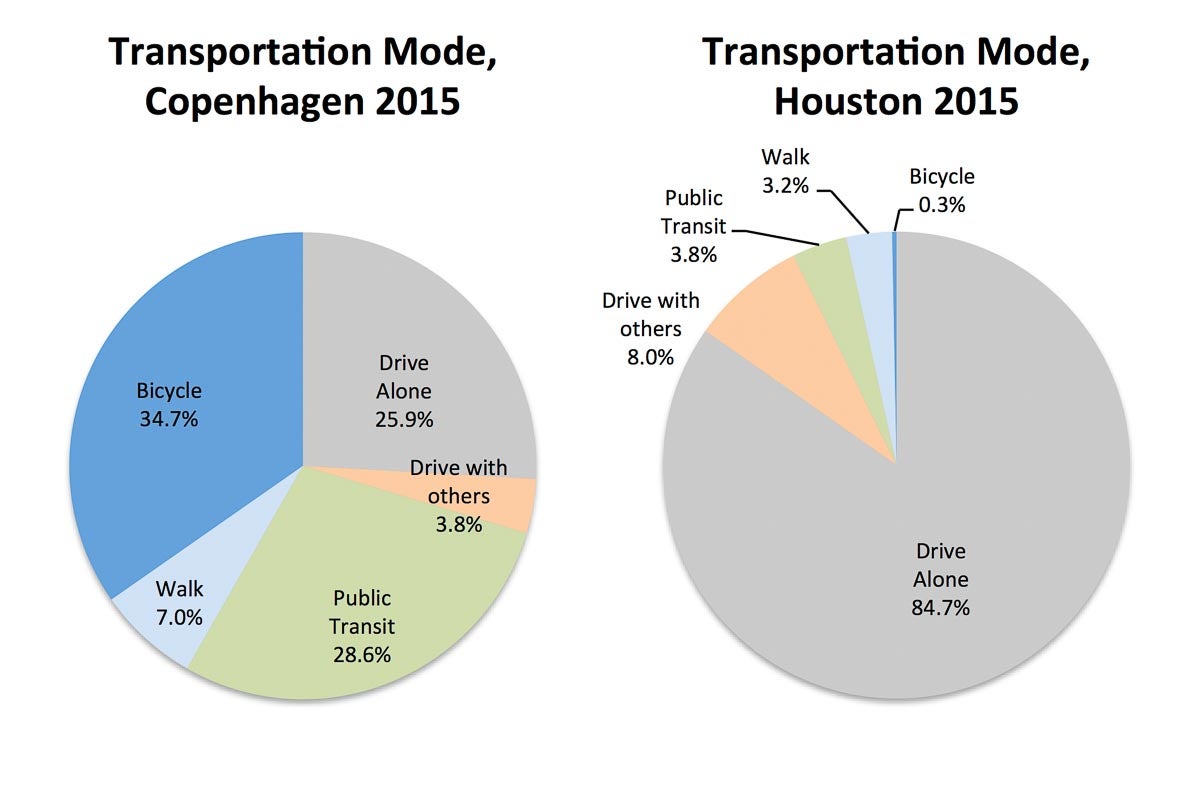
To be clear, there are significant differences in the built environment and transportation network of the two cities. It’s easier to use transit and bicycles in Copenhagen than it is in sprawling Houston (though two new light rail lines may be changing that).
But is something else at play here? Perhaps the ever-trustful Copenhageners are more willing than Houstonians to believe that the transit system will actually deliver their trains and buses on time. Maybe they’re more willing than Houstonians to trust automobile drivers to travel safely and spare them from harm as they ride bikes. Maybe Houstonians -- rightly or wrongly -- feel that if they drive alone, they are keeping the fate of their trips in their own hands.
Finally, while Houstonians are worried about air pollution’s effect on the health of their families, this isn’t a major concern among Copenhagen residents.
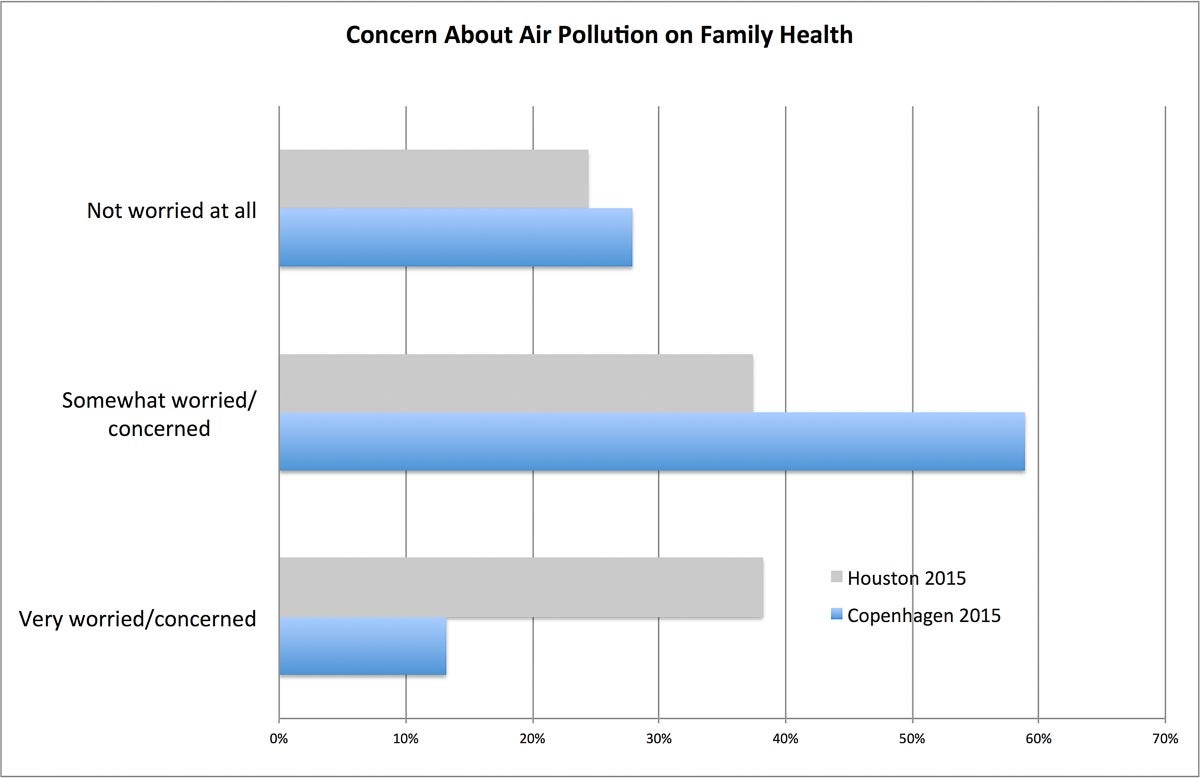
Just 13.2 percent of Copenhagen residents are “very worried” about air pollution, compared to 38 percent of Houstonians. Those results may be due to the proximity of some in the Houston area to refineries and chemical plants clustered near the eastern part of the region.
But it may also be because trusting Copenhageners believe their country’s government and businesses leaders won’t allow dangerous pollutants to be released into the air. Skeptical Houstonians, living in a state that’s not particularly known for tough environmental laws, may lack that same confidence in leading institutions.
As a growing number of people spend their time living and working cities, we’re forced to confront the question of how to make those places work best for their residents.
The solution to developing a “happy” community may have less to do with specific policies around urban planning, transportation and economics. Instead, it may have more to do with a fundamental, innate element of our society’s psyche: the ability to trust each other. And that, in turn, may be the driver of policies that create the people-focused communities Copenhagen represents.

